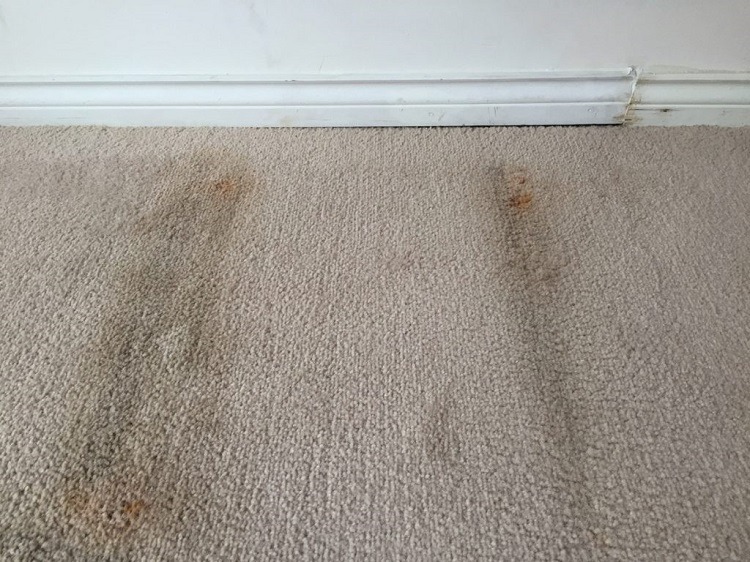For many homeowners, the presence of mold is a concerning issue, particularly in carpeted areas. The primary focus here is mold inspection tips for carpeted homes. Carpets, while enhancing the warmth and aesthetic of a home, can also harbor mold if not properly maintained. Understanding how to inspect and prevent mold can protect your health and investment.

Understanding Mold Growth in Carpets
Mold is a type of fungus that thrives in damp, warm, and humid environments. Carpets, especially those in basements or areas prone to moisture, can become prime real estate for mold spores. Mold not only damages your carpet but also poses health risks, including allergies and respiratory problems.
Why Mold Loves Carpets
The thick fibers in carpets can trap moisture and organic materials, creating a perfect environment for mold. When carpets are exposed to water through leaks or spills, and not dried properly, mold growth can begin within 24 to 48 hours.
Signs of Mold in Carpeted Homes
Identifying mold early can save you time and money. Here are some signs to watch for:
- Musty Odors: A persistent musty smell is often the first sign of mold.
- Discoloration: Look for unusual spots or stains on your carpet.
- Allergic Reactions: Increased allergy symptoms when at home can indicate mold presence.
Health Implications of Mold
Exposure to mold can lead to health issues such as coughing, sneezing, and breathing difficulties. Those with asthma or compromised immune systems are at higher risk. Learn more about preventing mold under wet carpet to ensure safety.
Conducting a Thorough Mold Inspection
Regular inspections are vital. Begin by checking areas prone to moisture such as basements and rooms with poor ventilation. Use a flashlight to examine the carpet closely for any signs of mold.
Tools Needed for Mold Inspection
Having the right tools can make the process easier. Consider investing in a moisture meter, which can detect excess moisture levels in carpets. Also, a flashlight and magnifying glass can help spot mold spores.
Preventive Measures for Mold in Carpeted Homes
Prevention is better than cure. Here are steps to prevent mold:
- Regular Cleaning: Vacuum frequently to remove dust and debris that can feed mold.
- Control Humidity: Use dehumidifiers to maintain indoor humidity below 60%.
- Quick Drying: Address spills or leaks immediately. Dry your carpet overnight to prevent mold growth.
Choosing Mold-Resistant Carpets
When selecting carpets, consider mold-resistant options. These carpets are treated with chemicals that inhibit mold growth, making them suitable for areas with high moisture.
DIY Mold Removal Techniques
If you find mold in your carpet, action is necessary. Mild cases can be handled at home:
- White Vinegar: Spray a mixture of white vinegar and water onto the affected area to kill mold.
- Baking Soda: Sprinkle baking soda, let it sit overnight, and vacuum it up to reduce odors and moisture.
For more DIY solutions, explore DIY carpet cleaning schedules for mold control.
When to Call Professionals
Severe mold infestations require professional help. If the mold covers a large area or has penetrated the carpet padding, contact a specialist. They have the equipment and expertise to handle extensive mold problems efficiently.
Maintaining a Mold-Free Home Environment
Beyond carpets, ensure the entire home is mold-free. Regularly check ventilation systems, fix leaks promptly, and maintain a clean and dry environment.
Regular Maintenance
Adopt a regular maintenance routine. This not only helps in early detection of mold but also keeps your carpets and home in pristine condition.
FAQs
How can I prevent mold under my carpet?
Ensure proper ventilation, control humidity, and address any water damage immediately.
What is the safest way to remove mold from carpet?
For small areas, use vinegar and baking soda. For extensive mold, consult professionals. Discover more on the safest removal methods.
Is carpet padding mold-resistant?
Some carpet paddings are designed to be mold-resistant. Ensure you choose the right type for areas susceptible to moisture. For additional details, visit carpet padding options.

Conclusion
Implementing these mold inspection tips for carpeted homes can significantly reduce the risk of mold, ensuring a healthy living environment. Stay proactive with regular inspections and maintenance to keep your home safe and comfortable.
This article contains affiliate links. We may earn a commission at no extra cost to you.


